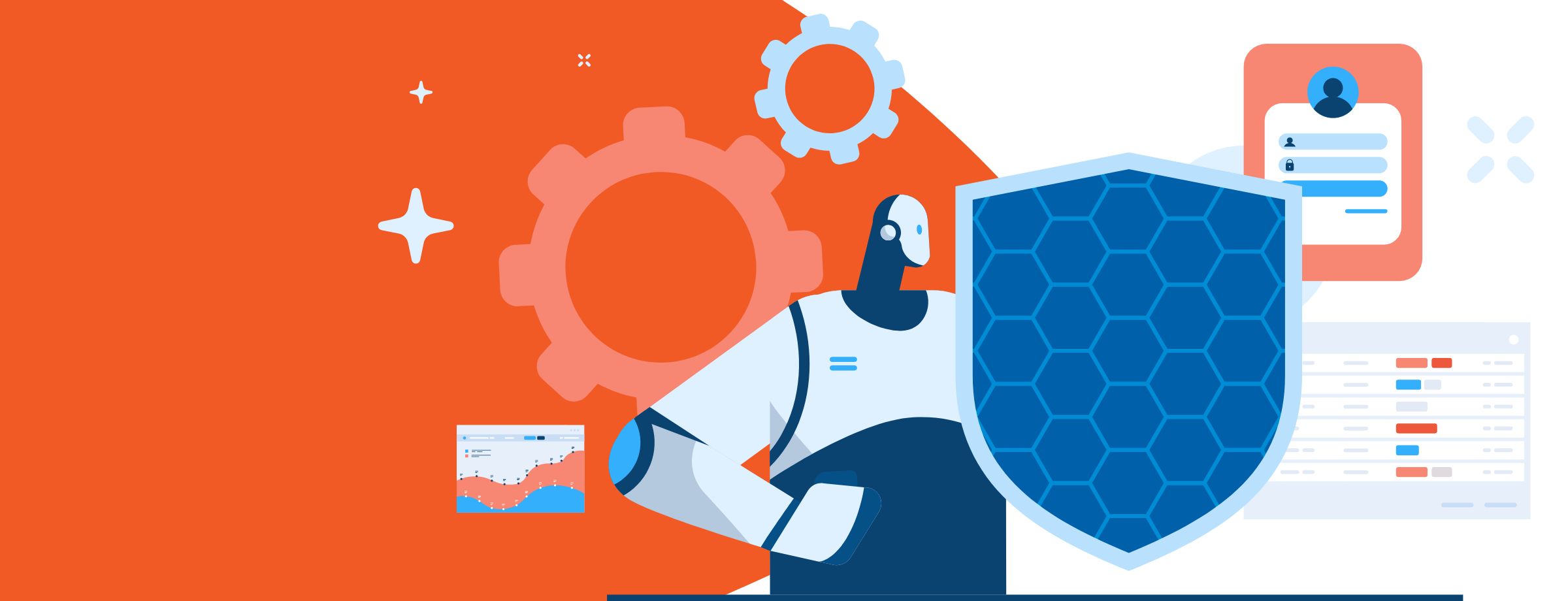Identity and access management (IAM) has moved to the front lines of AI readiness.
As more businesses explore Microsoft Copilot and other AI-integrated platforms, MSPs are under pressure to ensure client environments are ready, before those tools go live. That means tightening controls around who can access data, how AI interacts with business systems, and whether existing policies are strong enough to support Copilot without putting sensitive information at risk.
Weak authentication, outdated access controls and inconsistent governance policies often go unnoticed, until AI brings them to the surface. Tools like Copilot increase visibility into long-standing security gaps, especially around permissions and data access.
This is where MSPs can lead. By guiding clients to enforce multi-factor authentication, apply conditional access, and automate identity reviews, providers strengthen trust and create a secure foundation for AI adoption at scale.
In this blog, we’ll break down how to:
- Strengthen AI access controls with MFA.
- Use conditional access to reduce identity risk.
- Prevent permission creep with automated reviews.
Start building your MSP security strategy for AI:
Download the AI Cybersecurity Guide
to secure your clients from day one.
Let’s dig into the identity-first strategies MSPs need to build secure, Copilot-ready environments.
Why Identity and Access Management (IAM) is essential for secure AI adoption
AI tools like Microsoft Copilot interact with sensitive business data—files, messages, calendars, financials—based on the user’s permissions. If access controls aren’t clearly defined, AI can surface information that was never intended to be shared. The risk isn’t always malicious. It can be as simple as an employee asking Copilot a question and receiving data they weren’t meant to access.
IAM ensures AI tools only access the right data, under the right conditions, making it a core pillar of secure adoption.
- 81% of breaches stem from weak or stolen credentials (Verizon Data Breach Report 2024).
- AI-powered phishing attacks are up 126% YoY, highlighting growing identity-based threats (Darktrace Threat Report 2024).
For MSPs, the path forward is clear: strengthen IAM with Multi-Factor Authentication, Conditional Access and automated access reviews to help clients adopt AI confidently and securely.
Why MFA Is non-negotiable for AI-Ready environments
As businesses adopt tools like Microsoft Copilot, securing user access becomes even more critical. Without Multi-Factor Authentication (MFA), organizations risk exposing sensitive data to unauthorized users, whether through stolen credentials, misconfigured permissions or insider misuse.
AI systems handle large volumes of business-critical information. That means one compromised account—external or internal—can trigger a serious data exposure event.
MFA helps MSPs protect Copilot and other AI-enabled systems by:
- Adding a second layer of identity verification, even if passwords are stolen.
- Ensuring that only authorized users can access data-rich AI environments.
- Supporting compliance requirements in regulated industries.
- Reducing the likelihood of insider misuse or accidental data sharing.
MFA adoption has been proven to block up to 99.9% of identity-based attacks, but only when enforced consistently across all applications.
MFA best practices for MSPs implementing AI tools
To fully protect client environments using AI tools like Copilot, MSPs should apply consistent MFA strategies across every connected workload. These best practices strengthen identity security and help prevent unauthorized access across sensitive systems:
- Enforce MFA for all AI-related logins (including Copilot, Microsoft Entra, and Azure).
- Use phishing-resistant methods like hardware tokens or biometric authentication.
- Apply strict MFA policies to privileged users and API/service accounts.
- Combine MFA with risk-based authentication to flag unusual login behavior.
Microsoft Entra’s adaptive MFA triggers additional authentication only when user behavior suggests elevated risk, reducing friction without compromising security.
Using Conditional Access to control AI access points
MFA is essential, but it’s only part of the equation. Even with strong authentication in place, organizations still face serious risks, especially when users access AI tools like Microsoft Copilot from untrusted devices, unfamiliar locations, or with more permissions than they actually need.
Conditional Access allows MSPs to set adaptive policies based on user behavior, risk level, and device health, ensuring that only trusted users can interact with AI tools under the right conditions.
It doesn’t just block external attackers. It helps reduce internal risks, too—like accidental data exposure by employees with excessive privileges or misconfigured roles.
How MSPs can use Conditional Access to secure AI workflows
- Restrict access from untrusted devices
Ensure Copilot and other tools can’t be accessed from unmanaged or non-compliant endpoints. - Apply location-based access policies
Automatically block or challenge logins from high-risk geographies. - Limit AI permissions by role
Ensure only authorized users can interact with sensitive data through Copilot. - Require compliance posture checks
Prevent access to AI tools unless the device or app meets defined security standards.
With Microsoft Entra Conditional Access, MSPs can create access rules based on device health, user risk and app sensitivity, protecting AI workflows from both external threats and internal missteps.
Automating access reviews to prevent AI security blind spots
Access control isn’t set-it-and-forget-it, especially when it comes to AI. Over time, employees change roles, gain unnecessary privileges and accumulate forgotten AI tool permissions. That drift can quietly introduce new risks.
How MSPs can use automated access reviews for AI security
- Run quarterly AI access audits → Remove stale, unused accounts.
- Monitor privilege escalation → Detect unauthorized role changes in AI-powered environments.
- Integrate access review tools with Microsoft Entra → Automate deprovisioning of inactive AI accounts.
- Use AI-driven behavioral analytics → Identify unusual access patterns and respond in real time.
Microsoft Entra ID Governance automates AI access reviews, helping MSPs enforce zero-trust security principles at scale.
Essential identity security strategies for AI-Driven MSPs
Protecting Microsoft Copilot with identity-first strategies
Microsoft Copilot’s integration with Microsoft 365 makes it a powerful tool, but also a potential risk if identity controls aren’t properly configured.
- If an unauthorized user gains access, Copilot can pull confidential information from shared files.
- If data sensitivity labels aren’t applied, AI may generate insights from privileged client records
- Without Conditional Access and Role-Based Permissions, employees can unintentionally expose data.
Copilot is only as secure as the access policies around it. That’s why MSPs must guide clients to build identity-first environments before enabling AI features.
AI identity security is an opportunity, not just a risk
AI security isn’t just about stopping attacks, it’s about enabling secure adoption. MSPs who implement identity-first AI security strategies will:
- Strengthen client trust by securing AI-driven workflows.
- Unlock new revenue streams through AI security services.
- Future-proof their MSP business against evolving AI threats.
Want to take AI security to the next level? Sherweb helps MSPs simplify AI adoption with expert support, training, and hands-on security solutions. Learn how top MSPs are securing AI with Microsoft’s best tools and Sherweb’s enablement resources.
AI identity security is non-negotiable.
Download Your AI Cybersecurity Guide Now!




